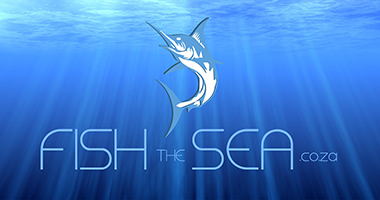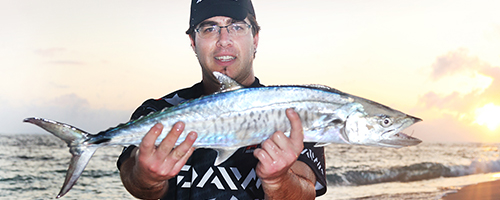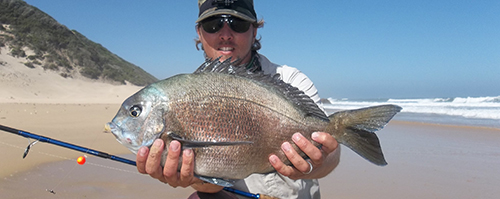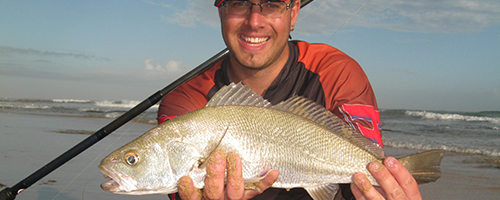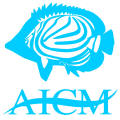The History Of South African Trout Fishing & What The Future Holds
 The
Rainbow Trout was first introduced to South Africa in 1897, but it
was only in the 1960's that sport fishing for the Rainbow Trout started
to become popular. Then trout farms and hatcheries started to develop in
Mpumalanga, KwaZulu Natal, the Western Cape
and the Eastern Cape provinces. These fish require clear, aerated water
preferably less than 21 degrees Celsius. Flowing water is essential for
breeding to take place, Rainbow Trout cannot bread in Stillwater dams.
The
Rainbow Trout was first introduced to South Africa in 1897, but it
was only in the 1960's that sport fishing for the Rainbow Trout started
to become popular. Then trout farms and hatcheries started to develop in
Mpumalanga, KwaZulu Natal, the Western Cape
and the Eastern Cape provinces. These fish require clear, aerated water
preferably less than 21 degrees Celsius. Flowing water is essential for
breeding to take place, Rainbow Trout cannot bread in Stillwater dams.
 Rainbow Trout in South Africa have a life span of only 5 years or less,
this is due to the conditions of the fish and the fact they are not in
their preferred environment. This is why they do not reach the sizes of
the Trout in North America or Europe. Males reach full breeding maturity
after 2 years. Breeding season is between June and September and is
called spawning season. Spawning still takes place in Stillwater even
though breeding is unsuccessful.
Rainbow Trout in South Africa have a life span of only 5 years or less,
this is due to the conditions of the fish and the fact they are not in
their preferred environment. This is why they do not reach the sizes of
the Trout in North America or Europe. Males reach full breeding maturity
after 2 years. Breeding season is between June and September and is
called spawning season. Spawning still takes place in Stillwater even
though breeding is unsuccessful.
The South African trout season starts in September and finishes at the end of May. The best times for fly-fishing are in September and October, and then in April and May. However, many of the country's dams and lakes have no closed season.
Brown Trout were first introduced into South Africa in 1890 from Scotland and a body of water called Loch Lagan. The first successful bred Brown Trout recorded was in 1893. The Brown Trout adapted so well in South Africa that Rainbows were soon introduced as well.
Trout and Fly Fishing Paintings available here...
 South African trout waters are small by international standards, more
streams than rivers, yet the average size of the trout caught is still
fairly large. Most of the rivers produce fish of up to 3 kgs, and in the
Barkly East area river fish up to 5kgs are not rare. In the upland
sections of most rivers the trout proliferate and the waters tend to
become overstocked. Good trout fishing is dependent on good rainfall and a season or two of
poor rains sets the sport back. South Africa is dry, but droughts are
less common in the eastern highlands than they are in the interior, and
often less devastating. Just as bad as droughts is the problem of flash
flooding and siltation. Trout Farms and private dams have become very
popular in South Africa and the industry is growing steadily.
South African trout waters are small by international standards, more
streams than rivers, yet the average size of the trout caught is still
fairly large. Most of the rivers produce fish of up to 3 kgs, and in the
Barkly East area river fish up to 5kgs are not rare. In the upland
sections of most rivers the trout proliferate and the waters tend to
become overstocked. Good trout fishing is dependent on good rainfall and a season or two of
poor rains sets the sport back. South Africa is dry, but droughts are
less common in the eastern highlands than they are in the interior, and
often less devastating. Just as bad as droughts is the problem of flash
flooding and siltation. Trout Farms and private dams have become very
popular in South Africa and the industry is growing steadily.
 It is often frowned upon to catch trout using other methods except fly
fishing. Trout do occur in areas where there are rare minnow, barb and
other fish species, they are believed to be the reason why some of these
fish are on the endangered list. Projects are currently underway, mainly
in the Western Cape, to see exactly how Rainbow and Brown Trout as well
as Bass have affected the indigenous fish populations…
It is often frowned upon to catch trout using other methods except fly
fishing. Trout do occur in areas where there are rare minnow, barb and
other fish species, they are believed to be the reason why some of these
fish are on the endangered list. Projects are currently underway, mainly
in the Western Cape, to see exactly how Rainbow and Brown Trout as well
as Bass have affected the indigenous fish populations…
There is concern amongst the fly fishing community as many conservationists want to get rid of the trout that occur “naturally” in rivers, streams and lakes where they are arguable killing off indigenous fish. It is a highly debated topic as a lot of people are either against or for this. Trout have been in our local waters for 120 years now and there are other things to take into consideration such as water quality, water temperature and organisms that the indigenous fish feed on… The Bass species are more likely to blame if predation is causing the indigenous fishes numbers to decrease…
